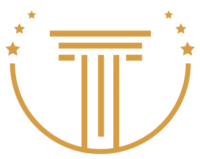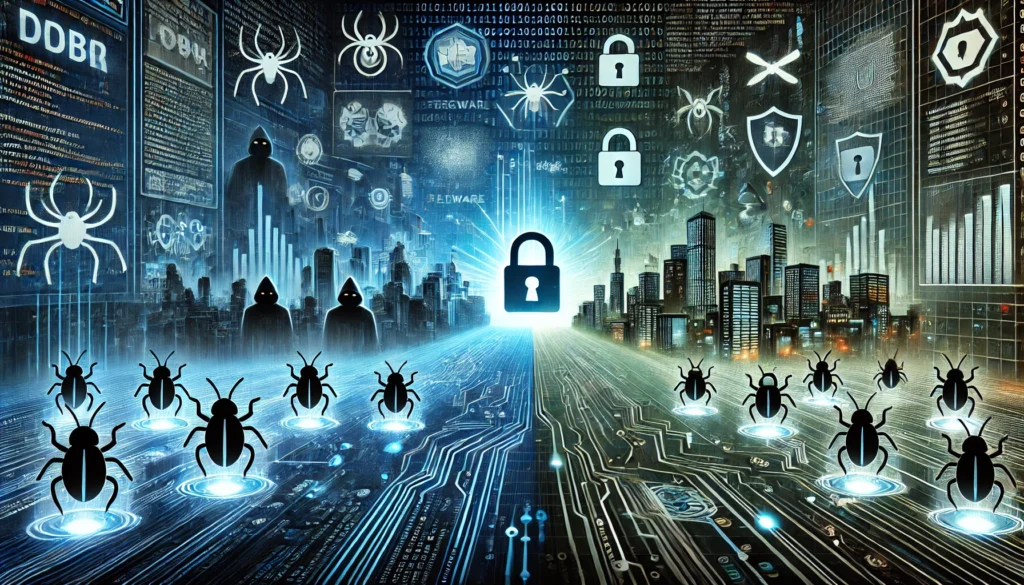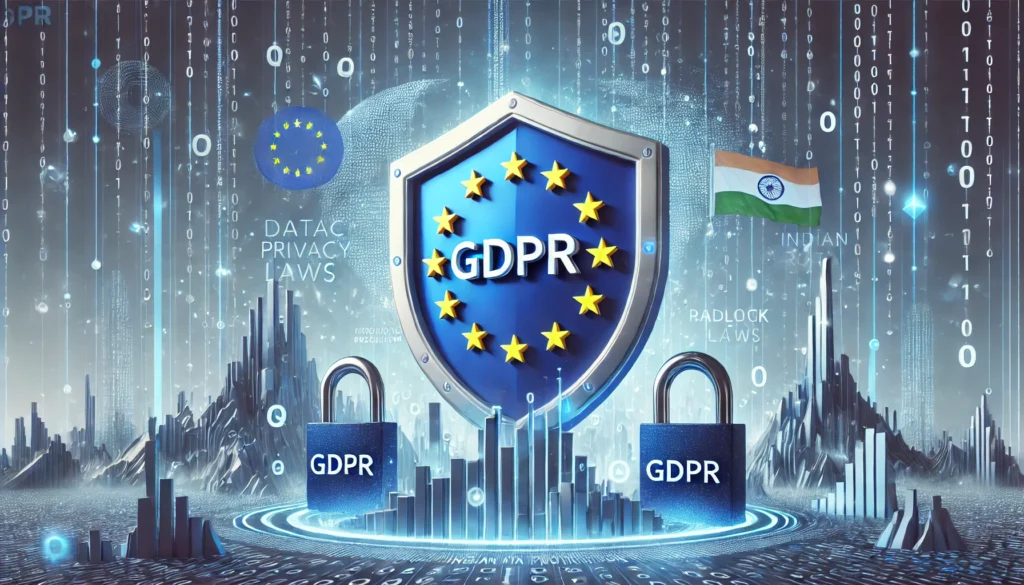Published on 05th May 2025
Authored By: Anisha Coutinho
Lords Universal College of Law, Mumbai University
Introduction/ Overview
Social media has transformed communication by giving people a forum to interact with people around the world, share information, and voice their opinions. Digital communication has changed tremendously over time. Even owning a telephone used to be difficult. Technology has changed how we communicate, starting with Alexander Graham Bell’s invention of the telephone and continuing with the development of television, landlines, and eventually smartphones with high-speed internet. These days, all it takes to connect with someone worldwide is a few touches on a screen.
The days of using messenger pigeons or letters to send a message took weeks are long gone. Communication is now simple thanks to the development of social media platforms like Instagram, Twitter, and WhatsApp as well as emails and instant messaging. But even while this quick development has made life easier, there are now significant obstacles to overcome. Due to a lack of strict safety regulations, the expansion of social media has resulted in a rise in cybercrimes, online scams, privacy violations, and digital harassment all of which pose serious risks.
Social media’s dual character as a platform for exploitation and a tool for advancement creates a crucial discussion point: How can social media regulation balance protecting free expression with encouraging responsible online conduct? The difficulty is in putting laws into place that protect users without restricting creativity and free speech.
Legal Provisions Related to Social Media and Free Speech
Social media operates within the framework of Indian law, ensuring that digital rights are protected while preventing misuse. Various legal provisions govern free speech, cybercrimes, and content regulation:
- Constitutional Provisions
- Article 19(1)(a) – Guarantees the Right to Freedom of Speech and Expression.
- Article 19(2) – Imposes reasonable restrictions on free speech in the interest of sovereignty, security, public order, decency, defamation, and incitement to offenses.
- Information Technology (IT) Act, 2000 (Amended 2008)[1]
- Section 66A (Struck down in 2015 in Shreya Singhal v. Union of India) – Earlier criminalized sending offensive messages online.
- Section 67 – Penalizes publishing obscene content in electronic form.
- Section 69A – Grants the government power to block online content in the interest of national security and public order.
- Indian Penal Code (IPC) & Bharatiya Nyaya Sanhita (BNS), 2023
- Section 499 & 500 IPC (Now Section 354 of BNS, 2023) – Cyber defamation punishable by imprisonment or fines.
- Section 505 IPC (Now Section 197 of BNS, 2023) – Criminalizes statements inciting public mischief or enmity.
- Section 66D of the IT Act & Section 317 of BNS, 2023 – Deals with cyber fraud and online impersonation.
- Section 153A IPC (Now Section 194 of BNS, 2023) – Penalizes promoting enmity between groups through speech or online content.
- Consumer Protection (E-Commerce) Rules, 2020
- Regulates misleading advertisements and unfair trade practices on digital platforms.
- Personal Data Protection & Privacy Laws
- Digital Personal Data Protection (DPDP) Act, 2023 – Establishes user data privacy rights and company obligations.
- Right to Privacy (Puttaswamy Judgment, 2017) – Recognized privacy as a fundamental right under Article 21.
- Intermediary Guidelines & IT Rules, 2021
- Mandate social media platforms to remove unlawful content within 36 hours.
- Require platforms to appoint grievance officers and comply with takedown requests.
Social media and the law: the significance of basic rights
Both citizens and governmental entities are subject to the extensive framework of fundamental rights, obligations, and legal provisions provided by the Indian Constitution. In order to ensure a fair and democratic society, these rights are intended to be exercised, safeguarded, and maintained. A legal wrong occurs when these rights and obligations are not exercised or upheld. “Rights and duties go together: if ‘A’ has a right, ‘B’ has a duty to respect it,” as the jurist Wesley Newcomb Hohfeld stated in his Theory of Correlation.
The right to freedom of speech and expression is one of these fundamental rights that is guaranteed by Article 19(1)(a) of the Indian Constitution, which permits citizens to freely express their thoughts. Article 19(2), however, places reasonable limitations on this freedom in order to prevent defamation, incitement to violence, and damage of public order.
The story of Chhattisgarh Journalist Mukesh Chandrakar is a clear illustration of how the right to free expression can be both a tool for justice and a possible danger. By bravely exposing a road scam worth ₹120 crore, he brought corruption involving powerful politicians to light. His goal was to raise public awareness of the misappropriation of public funds, not to slander anyone. His body was tragically disposed of in a septic tank at the politician’s home after he was murdered. The risks that journalists and whistleblowers encounter when expressing their constitutionally guaranteed right to free expression are highlighted by this case.
Social media has given people more voice and the ability to hold authorities responsible, but it has also turned into an excuse for abuse of this privilege. Character assassination, hate speech, fake news, and disinformation are all common and frequently have serious legal and societal repercussions. According to Sections 499 and 500 of the Indian Penal Code (IPC) and the Information Technology Act of 2000, cyber defamation punishes people who use internet platforms improperly to damage someone’s reputation.
On the other hand, social media has been essential to maintaining justice. Digital activism campaigns including #MeToo, #JusticeForSSR, and #FarmersProtest have been sparked by social media platforms like Facebook and Twitter, which have also helped to uncover crimes and rally support for social concerns.
The Need for Regulation
The increasing misuse of social media platforms necessitates regulatory measures to maintain order and prevent harm. Some key areas of concern include:
- Misinformation and Fake News
Major consequences have resulted from the rapid spread of untrue data on social media, including financial scams, public hysteria, political meddling, and mob violence. Misleading news reports, deepfakes, and false narratives have the ability to sway public opinion and upend social harmony.
Chain messages that say, “Forward this message/video, and all your wishes will come true by midnight,” are a typical example. Something horrible will occur if you don’t. These kinds of scams push people to propagate misleading information and cause needless fear. Similar to this, false political propaganda, phony employment offers, and deceptive health-related communications frequently spread online, confusing and hurting people.
It is crucial to put in place fact-checking systems, digital literacy initiatives, and more severe penalties for those who wilfully propagate false information since the unchecked spread of incorrect information can have serious real-world repercussions if it is not properly regulated.
- Online harassment and hate speech
A concerning surge in hate speech, namely directed toward marginalized, gender-specific, religious, and ethnic groups, has also resulted from the growth of social media. People can more easily spread hateful, controversial, and discriminatory content thanks to the anonymity and reach of digital platforms, which frequently encourage violence and societal conflicts.
Strict rules have been put in place in nations like Germany, such as the Network Enforcement Act (NetzDG), which holds social media companies responsible for failing to delete hate speech and other unlawful information. Online hate speech is still poorly regulated and challenging to manage in many parts of the world, though.
The intentional propagation of religious misinformation and targeted hate campaigns against minorities is a disturbing trend observed online. For example, differences between Christians, Muslims, and Hindus have been the subject of increasing debate, with churches and mosques being damaged. Unsettlingly, these kinds of incidents are frequently captured on camera and posted on social media to spread hatred, causing strife, bloodshed, and even fatalities. In addition to religious hatred, transgender people, crime victims, and other vulnerable groups frequently experience extreme internet harassment. Rather than being supported, these people are often the targets of misleading information, accusations, and disparaging comments, wrongly held accountable for crimes while real offenders are shielded from punishment.
Stronger content moderation regulations, legal implications, and public awareness efforts are necessary to combat digital hate culture because unchecked hate speech not only puts lives in danger but also disturbs societal cohesion.
- Privacy of Data and Monitoring
Significant privacy, surveillance, and cybersecurity issues have been raised by social media platforms’ and third-party companies’ unlawful gathering and exploitation of personal data. Large volumes of user data are frequently collected by social media businesses, sometimes without explicit authorization, which could be misused for purposes such as financial fraud, identity theft, and targeted monitoring.
Regulations like the European Union’s General Data Protection Regulation (GDPR) and India’s proposed Digital Personal Data Protection Bill seek to ease these worries by strengthening data security, preventing unauthorized data collection, and holding businesses responsible for privacy violations. Nevertheless, hackers still take advantage of weaknesses in digital security in spite of these laws. Hackers can obtain personal devices through frequent scams, phishing emails, and fake communications; this frequently leads to the depletion of bank accounts and the loss of sensitive data. Hackers frequently employ misleading links that show up while using social media or other internet platforms. Unknowingly clicking on these URLs can provide fraudsters access to personal information without authorization, allowing them to steal data or take over machines. Recently, phony Bluetooth pairing requests posing as wireless headphones were used in a fraud. Unknown Bluetooth devices attempted to connect to unaware individuals while they were on public transportation, including buses and trains. These links allowed hackers complete control over the victim’s phone if they were clicked, which might result in identity theft, financial fraud, and data theft.
People are extremely vulnerable to these kinds of attacks when they lack robust cybersecurity protections and digital awareness, which emphasizes the critical need for stronger laws governing digital safety, improved encryption techniques, and extensive cybersecurity education.
- Cybercrimes, the Dark Web, and AI Abuse
Social media is used for illicit purposes, such as financial fraud, cyber extortion, terrorism, and drug and people trafficking, even if it makes networking and communication easier. These crimes are sold on the dark web, which is only reachable with specific software and is frequently connected to social media sites. Cybercriminals use anonymous forums, phony profiles, and encrypted chat apps to carry out financial and trade fraud. It is difficult for law enforcement to follow these offenses because of poor oversight and anonymity.
The abuse of AI has increased cyberthreats even more. In order to facilitate identity theft, extortion, and frauds, scammers increasingly produce deepfake voice recordings and photos. AI-generated voice cloning, in which hackers imitate friends’ or family members’ voices to fool victims into sending money, is a growing worry. Furthermore, photographs on social media are frequently altered to produce explicit content, which can result in harassment and extortion.
Stronger AI-driven security measures, digital literacy, and more stringent legislation are necessary to prevent abuse and guarantee online safety in light of the increasing sophistication of cybercrimes.
Social media: a curse or a boon?
The benefits of using social media include:
- Connectivity & Communication: Social media enables people to stay in touch with friends, family, and coworkers wherever they may be in the world
- Information & Awareness: It gives users instant access to news, trends, and world events, keeping them informed
- Business & Marketing Opportunities: Businesses use social media for branding, customer engagement, and advertising; it’s an affordable way to reach a large audience
- Networking & Career Growth: Sites like LinkedIn facilitate professional networking, career development, and job searching; users can find amusement through memes, videos, and live streaming; and entertainment.
- Benefits for Education: Social media provides study groups, online courses, learning materials, and scholarly conversations.
- Social Movements & Awareness: It aids in raising awareness of significant environmental, social, and political issues.
Social media has greatly enhanced connectedness, communication, and information sharing, but it has also brought about a number of drawbacks that have caused grave worries. Addiction and excessive time consumption are two of the main problems, which lower focus and productivity. Many users such as young people in particular find themselves scrolling constantly, which has a detrimental effect on their daily obligations and lifestyles. [2]Furthermore, mental health conditions like anxiety, despair, and low self-esteem have been connected to continuous exposure to unattainable beauty and lifestyle standards on social media platforms. Overuse of these platforms has also led to fewer in-person encounters, which has weakened genuine connections and real-world social skills. The rise of offensive and unsuitable content, which is readily available to young children, is another worrying factor. Early exposure to graphic content might cause desensitization, behavioural problems, and even a rise in criminality. Additionally, social media has evolved into a tool for cybercrime, harassment, and blackmail. This risk is demonstrated by the recent instance of Prakriti Lamsal, a Nepali student, whose intimate conversations with her boyfriend were published online, showing how, in spite of her best efforts to put space between them, she was being blackmailed into meeting him. Similar to this, there was a concerning occurrence during the Mahakumbh festival when pictures and films of ladies taking baths were secretly taken and sold online for Rs. 3,000, which infuriated many and led to legal action. While encouraging creativity and connection, social media sites like Instagram have also turned into havens for hate speech, slurs, and online threats. Users often leave offensive comments on the images of children and innocent individuals, sometimes going so far as to threaten rape or murder. Social media abuse also includes fraudulent activity, in which people pose as law enforcement to trick and take advantage of gullible people. Some fraudsters use video calls to coerce women into inappropriate behavior under the guise of a “digital arrest,” while others make bogus claims that they have intercepted illicit parcels carrying drugs and demand money to release them. Despite the increase of these crimes, authorities and political leaders frequently prioritize addressing intercommunal conflicts over taking action to stop cybercrimes. Stricter laws and greater understanding of digital issues are desperately needed to protect people from the negative aspects of social media, as evidenced by the rise in instances of financial fraud, identity theft, and online scams.
Conclusion and Steps to Prevent Abuse of Social Media
Social media regulation calls for a well-rounded strategy that protects free speech while avoiding harm. Clear statutory definitions of hate speech, disinformation, and privacy violations should be part of a well-organized framework, as should stringent enforcement against cybercrimes like financial fraud, exploitation, and blackmail. To ensure accountability and avoid arbitrary content removal, judicial scrutiny is crucial. Campaigns for public awareness should teach users how to behave responsibly online, and social media companies need to put in place more stringent content moderation policies, robust AI-driven monitoring, and quick reporting systems for abuse. Governments, tech firms, and civil society organizations must work together to create a secure and moral online environment that preserves integrity, safety, and dignity.
References
- Pti, ‘Elderly Woman Loses ₹20 Crore to “digital Arrest” Fraud; 3 Held’ (The Hindu, 20 March 2025) <https://www.thehindu.com/news/cities/mumbai/elderly-woman-loses-20-crore-to-digital-arrest-fraud-3-held/article69353437.ece> accessed 23 March 2025
- Dhns, ‘Maha Kumbh Controversy: Pictures of Women Bathing, Changing Clothes during Maha Kumbh Surface Online; Police Initiate Action’ (Deccan Herald) < https://www.deccanherald.com/india/uttar-pradesh/pictures-of-women-bathing-changing-clothes-during-maha-kumbh-surface-online-police-initiate-action-3413712 > accessed 23 March 2025
- Mutha S, ‘Security Stepped up at Aurangzeb’s Tomb amid Calls to Raze It’ (The Hindu, 18 March 2025) <https://www.thehindu.com/news/national/maharashtra/right-wing-groups-call-for-removal-of-aurangzebs-tomb/article69340983.ece> accessed 23 March 2025
- ‘Suicide of Prakriti Lamsal’ (Wikipedia, 20 March 2025) <https://en.wikipedia.org/wiki/Suicide_of_Prakriti_Lamsal> accessed 23 March 2025
- https://en.wikipedia.org/wiki/Information_Technology_Act,_2000
- https://pmc.ncbi.nlm.nih.gov/articles/PMC9707397/




